Are you a Quiet Speculation member?
If not, now is a perfect time to join up! Our powerful tools, breaking-news analysis, and exclusive Discord channel will make sure you stay up to date and ahead of the curve.
One of my favorite personal trips was one I took a few years ago when I visited Quiet Speculation member pi in Amsterdam. Not only was he a gracious host, but we also saw all the sites and immersed ourselves in Dutch culture—I even had a chance to ride a bicycle throughout the city (it had been a decade or more since my last bike ride…it’s a good thing riding a bike is like, well, riding a bike!).
While I was there, I had a rare opportunity to meet an influential member of the Magic community: the creator of MTGStocks. We talked all things MTG finance and data management, and have since kept in contact to engage on Twitter. Over the past week, he and I have had a discourse on calculating the values of Magic cards. While it sounds trivial, this is no easy feat—it requires a boatload of accurate data and a smart-enough algorithm to pick up on outliers and imposters.
In fact, determining the value of one’s collection has always been a bit nebulous…
My History with Card Valuation
When I first started playing Magic back in 1997, there were a couple ways to look up card prices. I suspect the internet was an option, but this was before many households (including my own) had internet. So I had to rely on the latest issue of InQuest or Scrye magazine I had in my possession, or else I had to literally phone a hobby shop and ask them for a price. My step-brother and I have made multiple trades using the latter, by the way. It’s not efficient!
I have to imagine trading and buying/selling during this time before widespread internet was a bit like the wild west. Without access to hard data, cards had relative value more than absolute value. In other words, I knew I valued Shivan Dragon higher than Serra Angel, so a trade involving those two cards would have to be balanced out with additional cards. If there was a card we desperately wanted, we would give up whatever we’d have to in order to obtain it.
Fast forwarding some years, the internet revolutionized trading and card valuation. Before TCGplayer and eBay’s completed listings, I relied heavily on FindMagicCards.com for my pricing data; some of my earliest articles may have even used graphs from the site to highlight pricing trends. Then I was lucky enough to receive an invite to Apathy House, where you could enter cards for a trade and quickly determine the values of each side. I have no clue where these sites got their data from, but we made huge trading decisions based on them all the same.
It wasn’t for another couple years when TCGplayer came along and revolutionized the industry.
TCGplayer’s Influence on Card Values
TCGplayer: a site dedicated to buying and selling trading cards. Once this site became widespread and opened up to individual sellers (not just large stores), TCGplayer suddenly gained access to boatloads of pricing data. They could track what cards were being sold for, what conditions, how often, and how quickly. With this information, they could calculate a value for every card.
TCGplayer isn’t shy about this information. They boldly claim on their site that they are “harnessing the power of hundreds of brick and mortar stores, online stores, and individual sellers” to “put together the most comprehensive Price Guide available anywhere.” They go on to claim they “serve up over four million pages of pricing data each day through [their] popular marketplace and via partner websites and mobile applications.”
With access to so much data, they truly have become the place for pricing information. Then we have sites like MTGStocks accumulating the data TCGplayer provides to offer different trends, analyses, etc. The flow of data is like a well-oiled machine at this point, and these sites have proven accurate and reliable for the vast majority of cards.
It Works Except For When It Doesn’t
I wish this was the end of the article, and everyone could live happily ever after, knowing precisely what their collection is worth and when. But if you’re reading this article, you’ve probably been around long enough to know that’s not the case—especially when dealing in Reserved List cards as I am wont to do. When dealing in cards with low volume or a buyout (or both), the pricing data becomes a little…questionable.
Consider, for example, the top mover of the day when cards from The List are toggled on for display:
Are The List copies of Rest in Peace truly worth nearly $4000 now? Of course not. Visiting TCGplayer directly, we can readily see that there’s currently only one copy in stock listed at this ridiculous price point, while recently sold copies have gone for $6-$8
Thus, the “listed median price” is being manipulated by the lone seller with inventory, creating this artificial spike. The “market price” on the other hand, is a mysteriously proprietary calculation TCGplayer performs to estimate a card’s value based on recent sales data. So is “market price” the de facto source for accurate pricing data?
Not exactly.
When sales volume is low, or when a card spikes, the market price can lag the true market value significantly. For example, I just looked up Alpha Northern Paladin, one of many Alpha rares that shot up in price over the past year.
That $499.00 market price was probably correct a year ago, but today it is way off. Ironically, the listed median price is much closer to the card’s true current value—Card Kingdom pays $1260 for near mint copies on their buylist, more than double “market price”. If you look at the “Latest Sales” section, you can see why the market price is so far off. There is no data there, probably because a copy of this card hasn’t sold on TCGplayer in quite a while.
Because TCGplayer keeps their algorithms confidential, it’s impossible to look at these data and decipher the source of error. But the fact remains: while the data is extremely useful in most cases, there are situations where there’s room for improvement.
eBay’s Entry to this Space
TCGplayer is a website with enough data to provide reliable pricing. But it’s not the only one. eBay also has access to a ton of collectible card price data through its platform, and they recently begun harvesting that data to provide a service much like TCGplayer. Check out this email I received from eBay last week:
Track card prices over time? Track my collection’s value? Obtain reliable pricing information for cards? Can you think of any other sites that offer these services?
It really looks like eBay is going after the collectible card market that TCGplayer has dominated for years. I’m not sure if they’ll succeed, but eBay is a publicly-traded company with a market cap of $46 billion—they must be significantly larger than TCGplayer. Therefore, they at least have access to more resources (whether or not they apply sufficient resources to this endeavor is yet to be seen). There’s certainly potential for eBay to bring some much-needed competition to this space.
Since I was invited to beta test this new service, I thought I’d give it a whirl to see what the interface looked like. Currently, most of the features are available only on mobile, so I shared a couple screenshots from my cell phone below.
It looks like eBay is pulling pricing for cards I purchased from the site over some period of time. I think it’s been over a year since I bought the cards pictured though, so I’m not sure how far back the site is going. What’s more, of course, the site doesn’t automatically remove cards from inventory if I sell them on a different platform, so the collection would have to be manually maintained.
Still, I see some potential. eBay is using their own proprietary calculation to determine a card’s value. However, I’m concerned that their calculation will fall into the same trap as TCGplayer’s when it comes to sparsely sold cards. For example, I wonder how eBay’s pricing feature would estimate the value of an Alpha Northern Paladin, given the variation in completed listings on the site:
By the way, whoever purchased that $340 copy got an absolute steal! They could flip that card to Card Kingdom immediately and likely double their money. But I digress…
What will eBay do with this data? Average the three listings? Report the most recently sold (which would undershoot the card’s true worth)? Judge by conditions inputted? This is one of the shortcomings of eBay relative to TCGplayer. On TCGplayer, critical data such as set name and condition is structured. That is, there are a set number of options to choose form and every listing must include these selections. On eBay, anything goes. A card can be listed as “EX” or “SP” or “lightly played” and they could all mean the same thing. On the other hand, a card could be listed with a picture and no condition or set name in the actual text. How will eBay handle such freeform, unstructured data? This is yet to be seen, but they certainly have the resources to do it.
Wrapping It Up
Competition is great for the market, because it forces innovation and drives down prices. If eBay truly attempts to create a collection tracker to compete with TCGplayer (and other sites), this could bode very well for the player base. But I am not truly convinced this will be successful. The data is available, and eBay definitely has enough to provide something of value. But the lack of structure to some of the necessary variables makes me weary of the end product’s fidelity.
I imagine that cards that sell in a more consistent range, such as cards printed in the past decade, will be robust and accurate in eBay’s tracker tool. But for older cards with sparser sales and larger spreads across conditions, I don’t know how eBay’s algorithm will perform. If the calculator struggles, I don’t see this being any better than TCGplayer.
This is why my go-to source for values on older cards remains Card Kingdom. They are just a single vendor, so of course, this skews data. But their algorithm that tracks their own sales has proven robust and agile enough for me. Their buylist changes every day, their pricing is constantly updated based on their inventory and sales, and their price isn’t easily manipulated by sellers who list $6 cards for $1000.
What’s more, their buylist is immediately available to me. If I want to convert a card for cash, I know I can do so by selling to Card Kingdom and I can calculate precisely what I will earn. With eBay and TCGplayer, there’s no guaranteed sale like there is with a buylist. I can try listing a card at the “market price” or the “last sold eBay price”, but the card could sit there and rot for weeks or months without a sale. A buylist price may be lower, but it’s virtually guaranteed and I put a lot of stock in this fact.
Will eBay’s new tool revolutionize the CCG industry as they advertise? I’m skeptical. But I do think see it as a huge positive that they’re trying. We’ve come a long way from the days of calling up local game stores or using monthly magazines to determine pricing. At the same time, I feel like we’ve been fairly stagnant in this space over the past few years. It’s probably time for another disruptor to come in and change the game once again. Maybe it’ll be eBay. Maybe it’ll be someone else. Either way, there’s room for improvement and I’m excited to see a heavy hitter like eBay take a stab at making card pricing easier and more accurate than ever before.


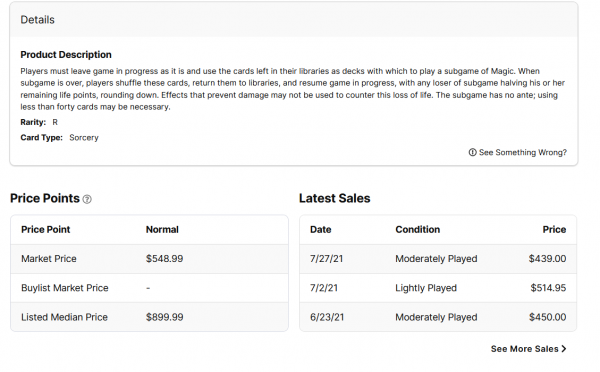
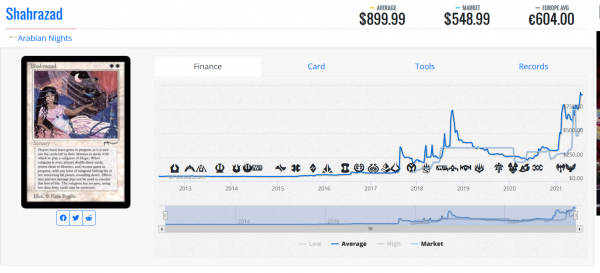

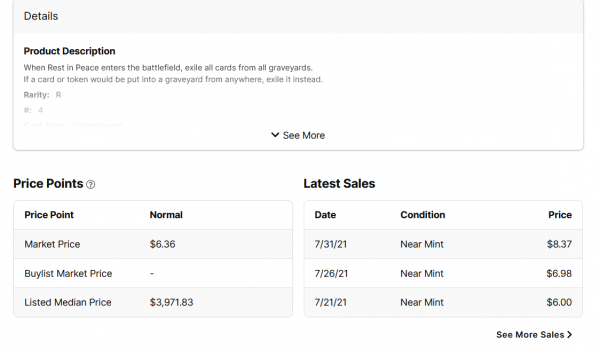
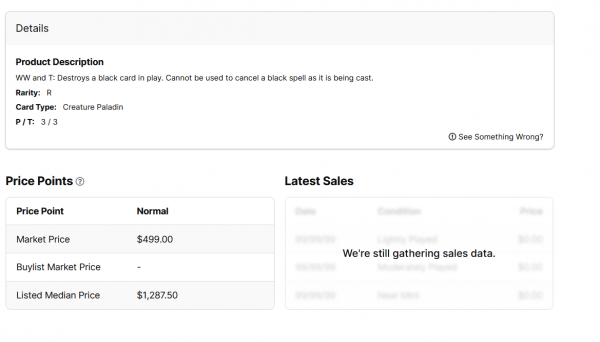
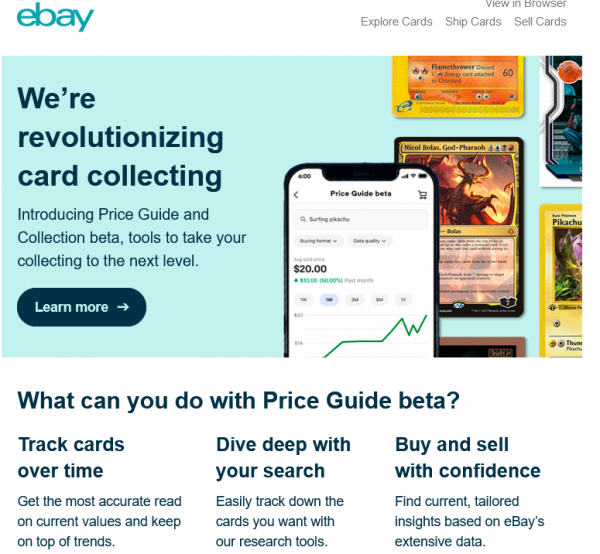
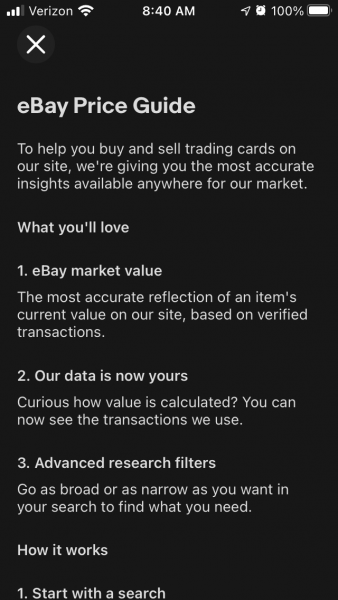
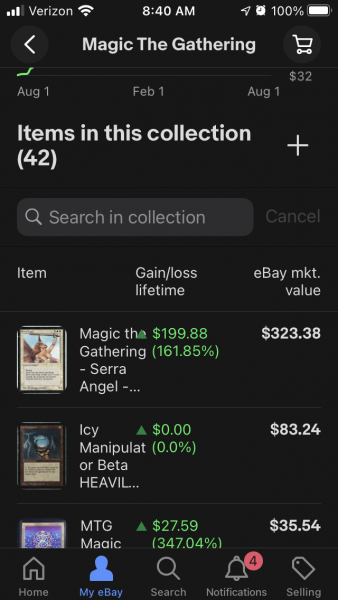
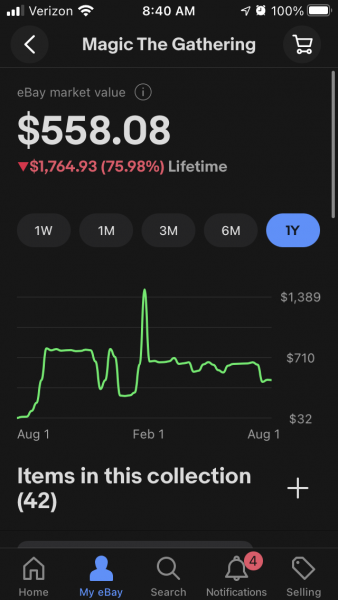
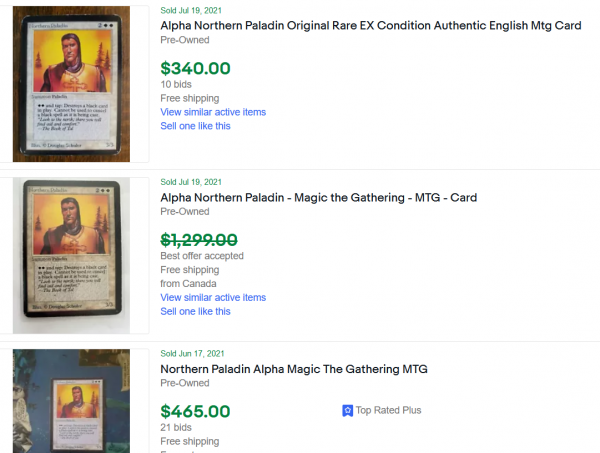



My valuation is normally based on the cheapest one on the market. It’s the price at which you can still technically buy it. If there was a chart that gave me that information also based on the card’s condittion, I would find it extremely useful. It’s very time consuming to search card by card waiting to see what pops up. If all that information was provided in one single place, it could save hours of repetitive searches. It would provide a highly accurate information of their market value.
I still remember that hilarious bike ride! You were a danger on the road!